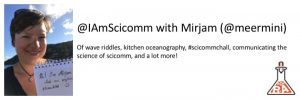
Guest posts, take-overs, interviews, and why I love them
Guest posts, take-overs and interviews are a great alternative to maintaining social media channels for every scientist / project / institution individually, if that isn’t what you want to be…
